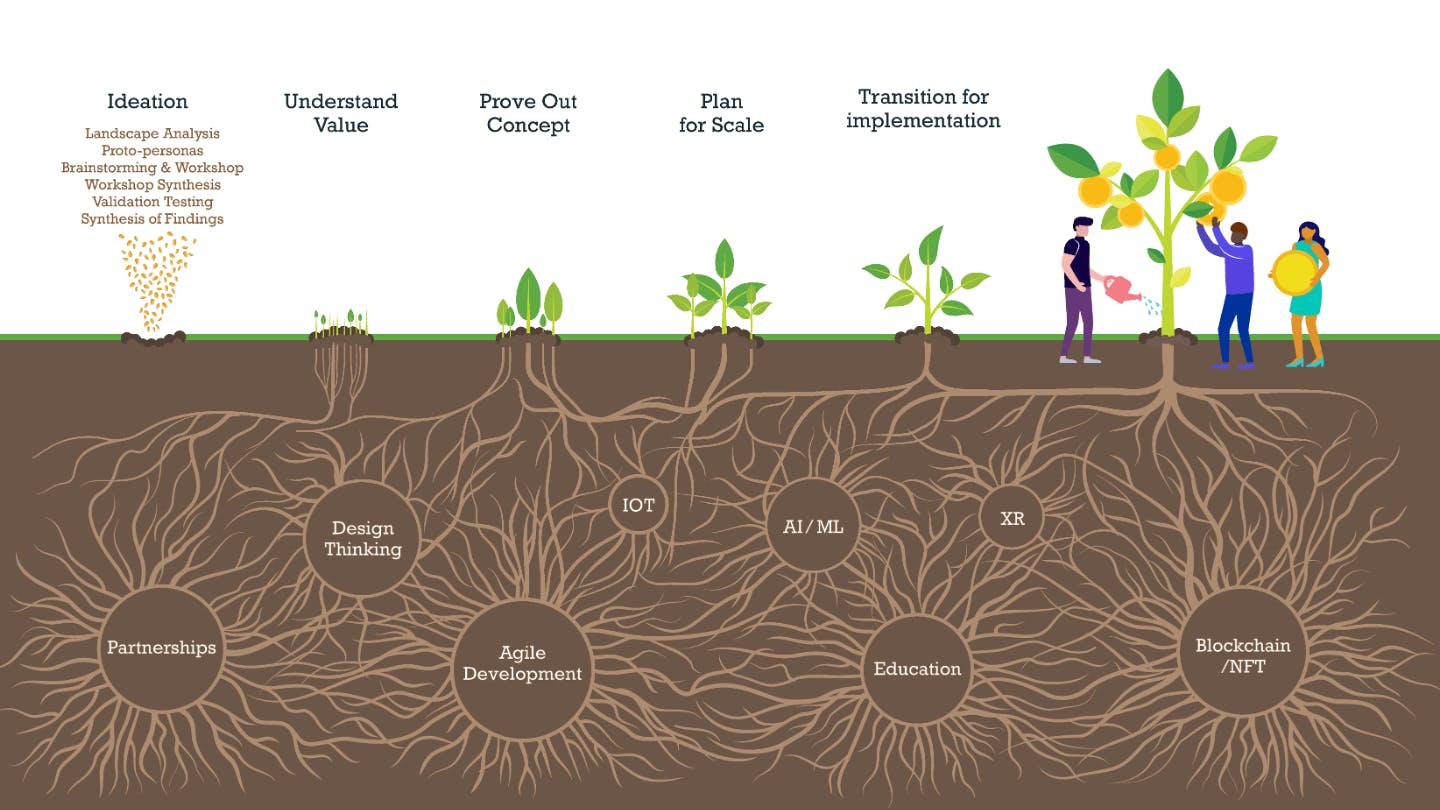The Enterprise Innovation Farm 2.0: Mushrooms Will Save The World

Recent years have brought a growing sense that the old ways no longer serve. Throw in a pandemic and accelerating evidence of climate disruption, and we all hear the drums beating even louder for new approaches.
In our small way we teamed up with the Emerging Technology & Innovation team at W.L. Gore to develop a new model for enterprise innovation — a replacement for the “innovation funnel” that we dubbed the “Innovation Farm.” We were challenged to come up with a paradigm that embraces complexity and difference while being resilient and adaptive. You can learn about the basics of the approach in our post here.

This past year, when we revisited the model to see what was working and how we might evolve it, we started to look below the surface. One of the most important factors to any farm’s productivity and resilience is the health of the soil. The soil layer is not just a bunch of dirt but it is its own biome full of insects, bacteria and fungi (for the sake of disambiguation: mushrooms are really just the fruit of an organism know as a fungus — the majority of the fungus is a network of root-like strands called mycelia).
Recent research has uncovered the importance of fungi in soil and ecosystem health. They provide the following eco-services:
- Recycling and composting - they break down cellulose and other decaying matter into useful nutrients
- Communication - they shuttle information through the mycelial network (the mycorrhizal network or shroom-root network) between trees and even across species. (Check out some of Suzanne Simard’s amazing work here.)
- Transportation - they can move nutrients and carbon between individual plants and trees
Some say mushrooms can save the world through detoxifying ecosystems and medical breakthroughs. And materials science, in which W.L. Gore has been a leader for over 60 years, is starting to look at how fungi can be used to replace carbon-intensive products from clothing to building materials.
Let’s get back to the farm. We expanded our model this year to represent a mycelial network consisting of technologies, knowledge, people, functional groups, etc. As an innovation group at an enterprise, your job might not be (just) to come up with the best ideas and make them happen, but to tend to the health of the soil — the resources, people, forums and foundational processes behind the work.
As a leader who fosters innovation, you can provide nutrients and support to any groups or individuals in the organization. You can connect resources, symbiotic projects, knowledge and tech in ways that are generative for all. You can help take lessons learned from “failed” initiatives and compost them into valuable learnings or components. You can curate a rich environment in which seeds can sprout and fruit can grow and ripen. Here is what that can look like in our “Innovation Farm 2.0” visualization:

My collaborator at Gore, Gen Gurczenski, and I presented this at the IOT World Conference in Barcelona in May to much intrigue, and are excited to be presenting it again this week at HealthInfo 2022 in Lisbon.
One of the most striking things I find in looking at these patterns is how much they mimic images of synapses in the brain (or the internet itself… the very network over which you are ingesting this morsel). When DARPA (not Al Gore) created the very first version of the internet, ARPANET, it was answering the question: If the Soviets take out a major portion of our communications infrastructure, how can we still communicate effectively? The answer was a complex, non-linear, network- and node-based system that had no center, no command and control, and without hierarchy because those systems are inherently more fragile.
This paradigm shift seems to be happening across all layers of society, from how we organize for work to the potential disruption of fiat currencies by crypto and other emergent technologies. Embrace the change, get down with complexity and increasingly dynamic environments and join us on the farm.
To access our full updated Innovation Farm presentation from SoftNet Congress 2022 in Lisbon, Portugal, click here.



